Rig tour: Kenny Wayne Shepherd
We talk tone with the bluesman as he embarks on his Lay It On Down tour

Introduction
Kenny Wayne is a man who knows all about how to get the tone that he wants. You don’t get several Dumbles built for you without a good reason!

Kenny Wayne Shepherd guitar lesson: how to weave classic blues licks into original solos
The Louisiana bluesman has clearly taken the time to understand the engineering behind the gear he chooses, and after 27 years in the business that means he has an immense amount of knowledge that all players can learn from.
On this tour, he’s chosen a lighter rig for the European leg. It also means that with a fly-in rig for a player who owns originals and reissues for some of the key components, there’s sometimes a compromise or two to be made. But Kenny is cooking up a pretty killer tonal recipe here regardless. Let’s have a rummage and find out more...
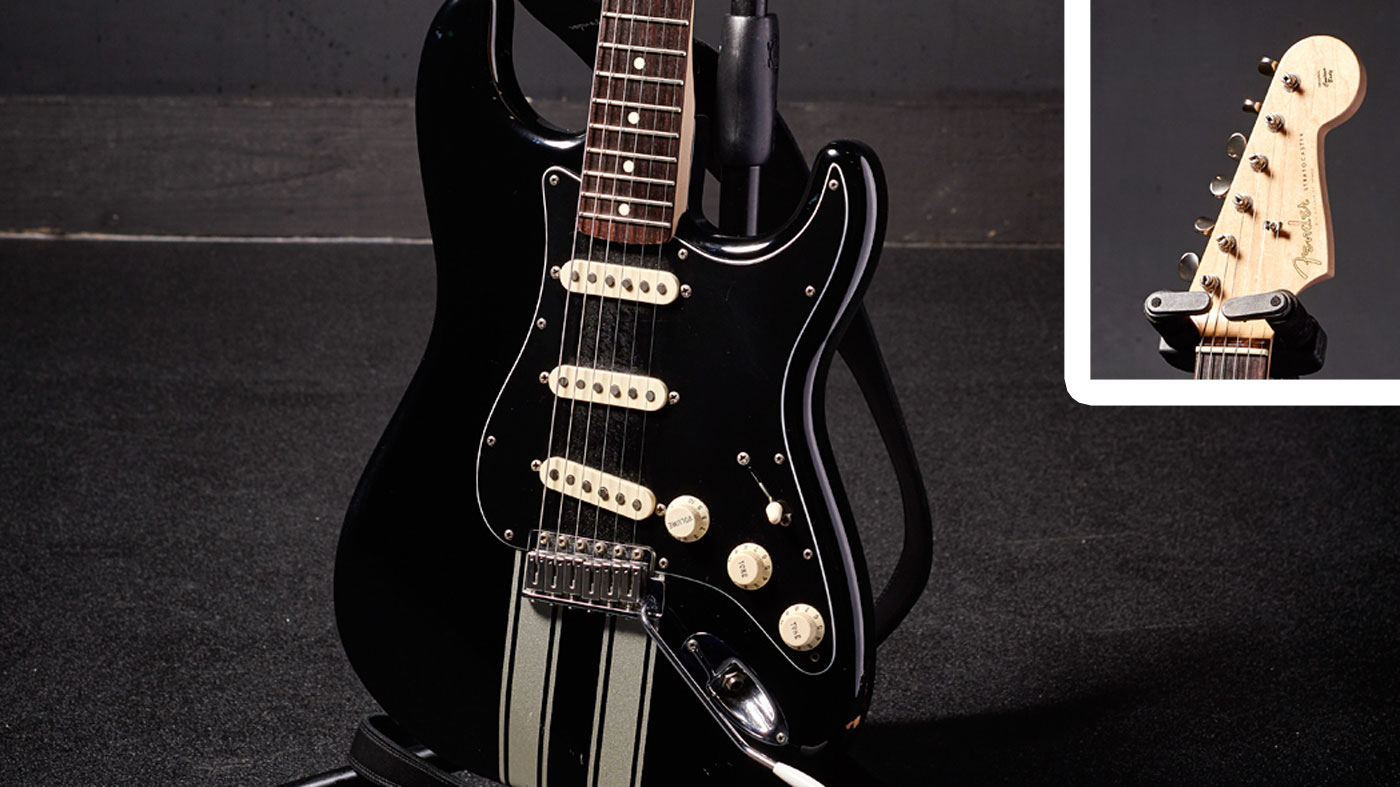
Signature Series Fender Stratocaster
“For 75 per cent of the show I’m using this signature series Strat of mine. It’s an early production version.
“They wanted the signature series to be built in Mexico so it would make it more affordable. I said, ‘That’s great as long as we can do an American version as well’, which we’re developing right now.
On a typical day it’s a toss up between cars and guitars. I love them both and they’ve been a part of my entire life
“I didn’t want to put my name on any guitar that I’m not willing to play straight off the line myself, and this is an early production version. The racing stripes reflect my love of cars. On a typical day it’s a toss up between cars and guitars. I love them both and they’ve been a part of my entire life. It’s nice to be able to combine my passions.
“This has all the features you would expect; it’s got jumbo frets, a 304mm (12") radius neck so it’s flatter, but thicker too. And the KWS signature pickups we spent a year and a half voicing just the way I wanted them to sound. We experimented with a lot of things; materials, pole piece heights and at one point we even tried installing them backwards and reverse winding them. All this weird stuff . But eventually we really started honing in on the sound… to create a really natural, really round, very woody tone and not too much high or low end. A uniform sound. In my opinion, and I’m not saying it because they’re mine, I think these are some of the best-sounding Strat pickups on the planet.”
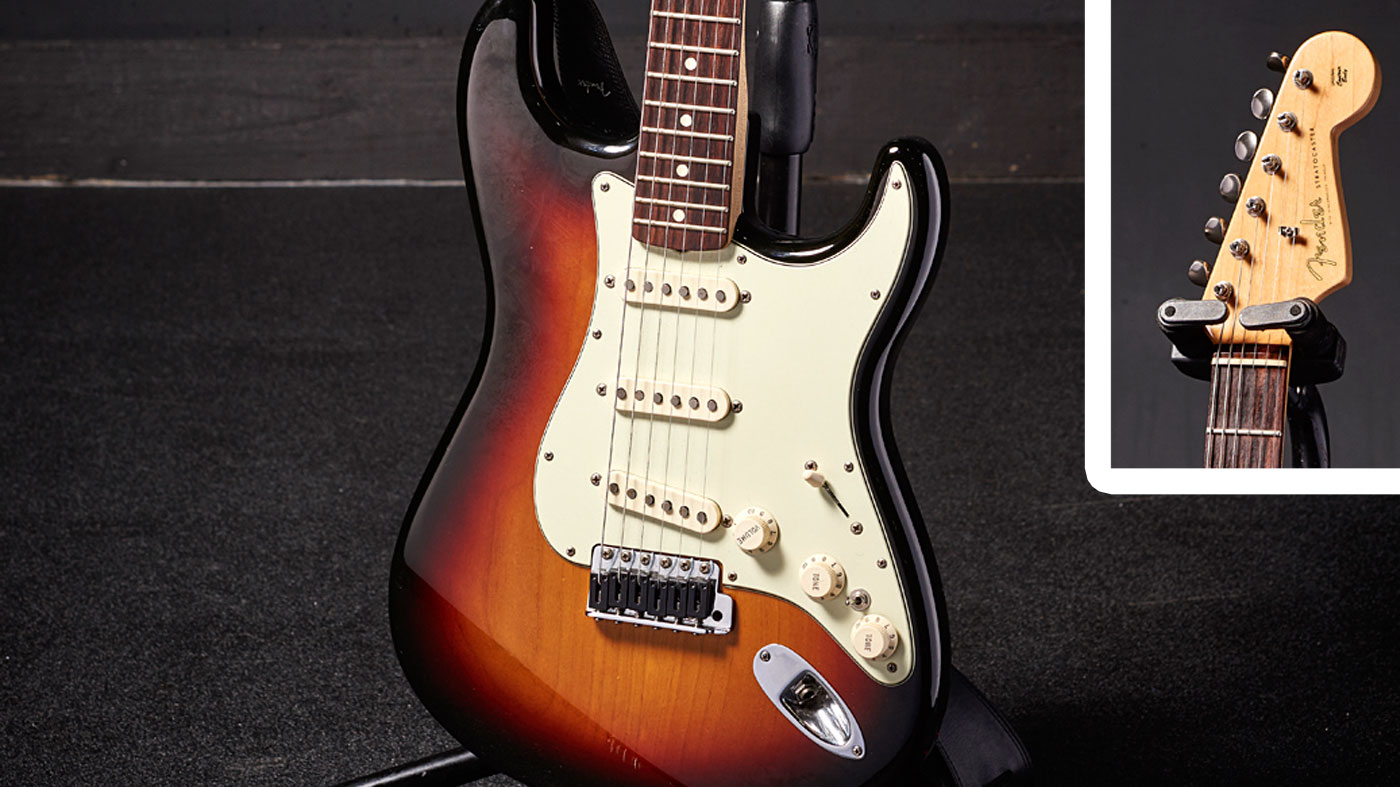
Signature Series Fender Strat with Piezo
“This is a production one, but this one has the Graph Tech Ghost pickups system installed on it. It sounds like an acoustic if you were using a DI with one on stage.
“I use that for the intro and the first verse of Blue On Black and then when I got to kick on that Univibe I flip this back and it goes straight back to being able to use the other pickups in the guitar. That’s the sole purpose of this guitar.
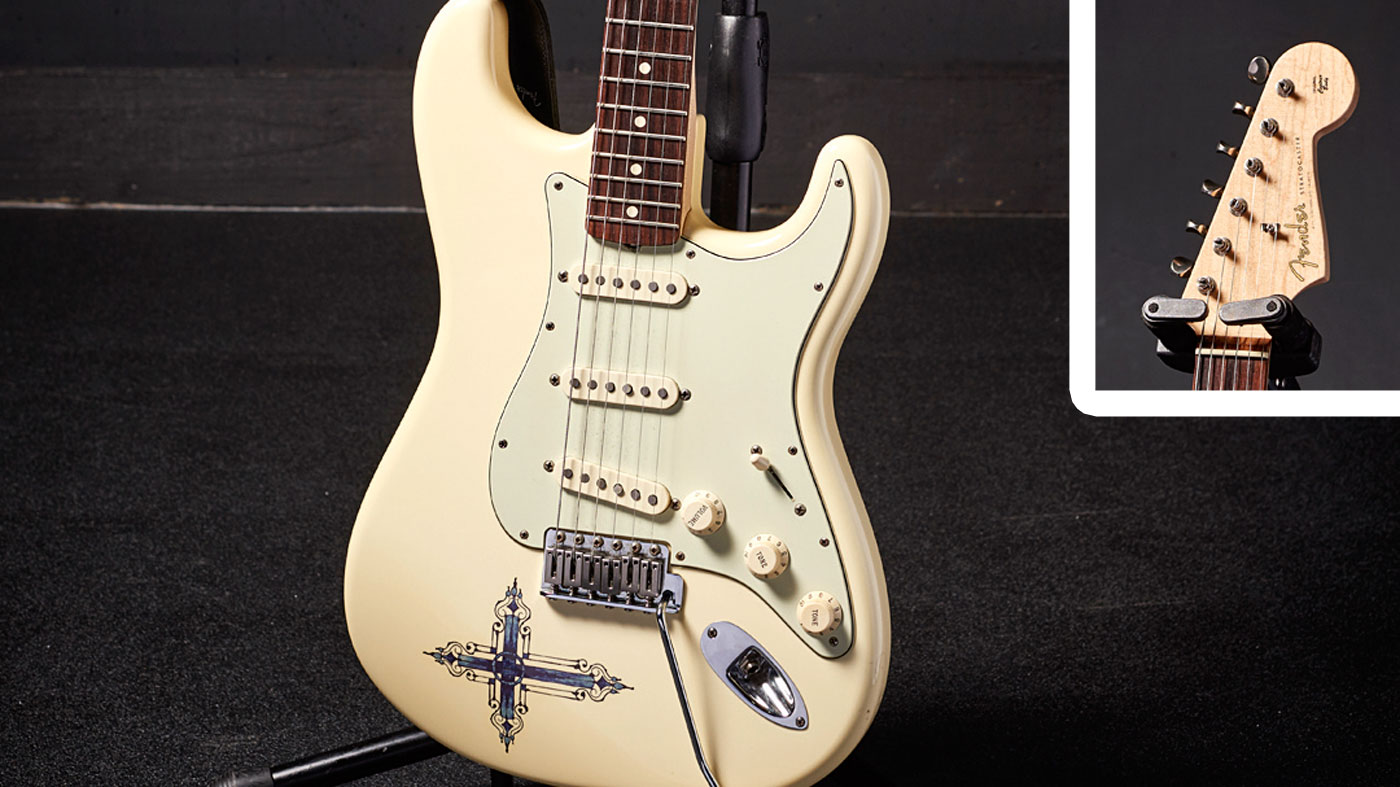
Signature Series Fender Strat
“The black one is in 440, the Sunburst for Blue On Black is in drop D and this one is a half step down. This Strat is another production signature model with the cross on it.
My wife did this design, she painted this and then they took her artwork
My wife did this design, she painted this and then they took her artwork, put it into a computer and figured out a way to transfer it to each of the guitars.
“This is my favourite one of the three. I like the appearance of this the most, and it sounds great. I use this on the Hendrix song [Voodoo Child]. I also use this guitar on the two songs we do from my first record - Deja Vu and Born With A Broken Heart, plus on the new album, Diamonds & Gold, because I can play it in a B natural position with it being a half step down.”
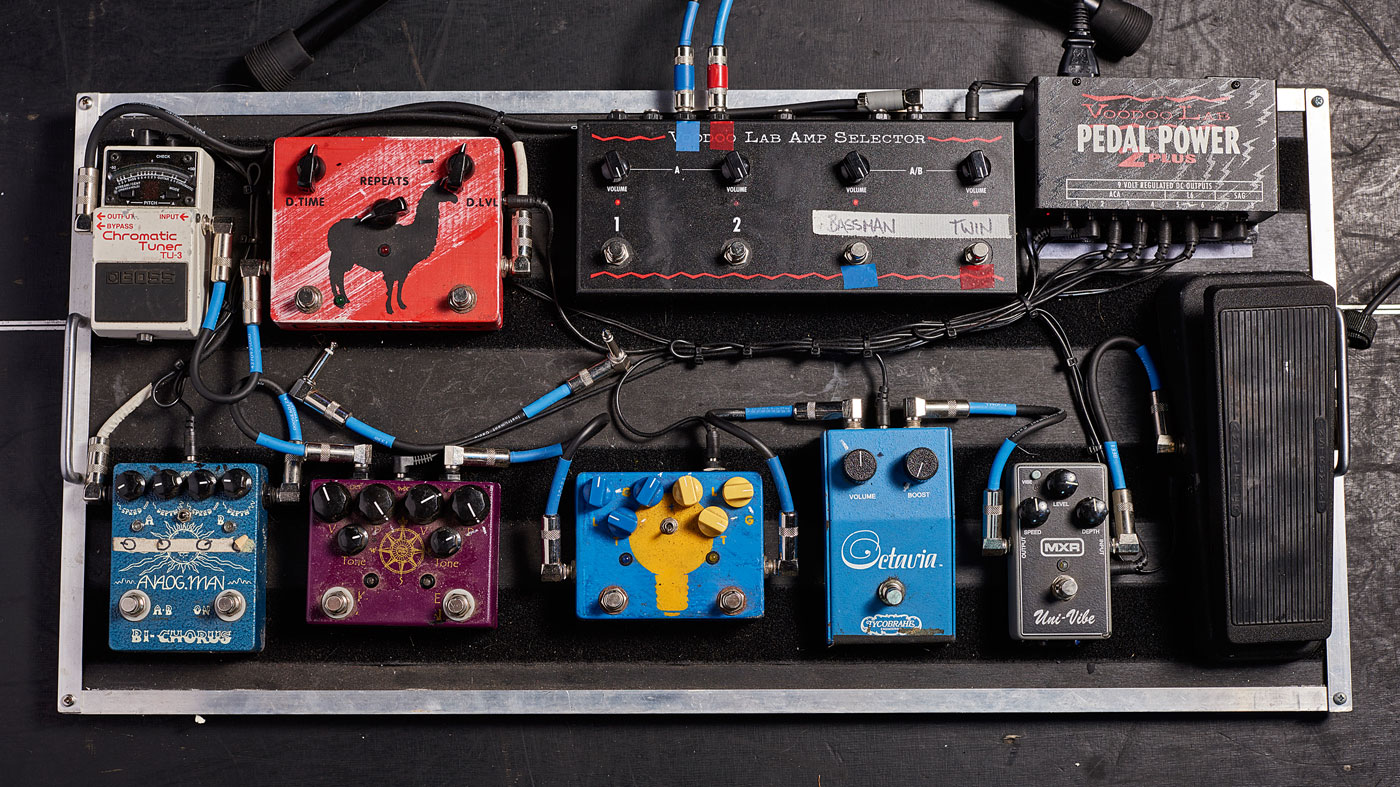
Pedalboard
“Back home I have a switching system so I don’t have to do so much tap dancing. This is almost the same setup, without the switching system and a couple of small exceptions.
Jim Dunlop Wah
“I believe that this is one of the Clyde McCoy reissues that they make. Back in the States I use a Custom Audio Electronics wah that’s also made by Dunlop but under the Custom Audio Electronics name. So they sound slightly diff erent. Actually, I find the CAE to be a little more vocal, it has a little more broad range. But this one is good and it gets the job done.”
MXR Uni-Vibe
This is, in my opinion, one of the best solutions for getting as close to the sound as you can in a smaller housing
“A Univibe circuit is a pretty complex beast. The bulk of the sound on the original Univibes was dependent on this lightbulb flashing on and off inside. And when you’re trying to condense that into a very compact box like this one, you’re going to start sacrificing some of the sound. So this is, in my opinion, one of the best solutions for getting as close to the sound as you can in as smaller housing as possible. I only use it on one song, which is Blue On Black. We have a rhythm part that comes in right at the top of the second verse. I go from the acoustic sound to the Univibe for the rhythm.”
Chicago Iron Octavia SE
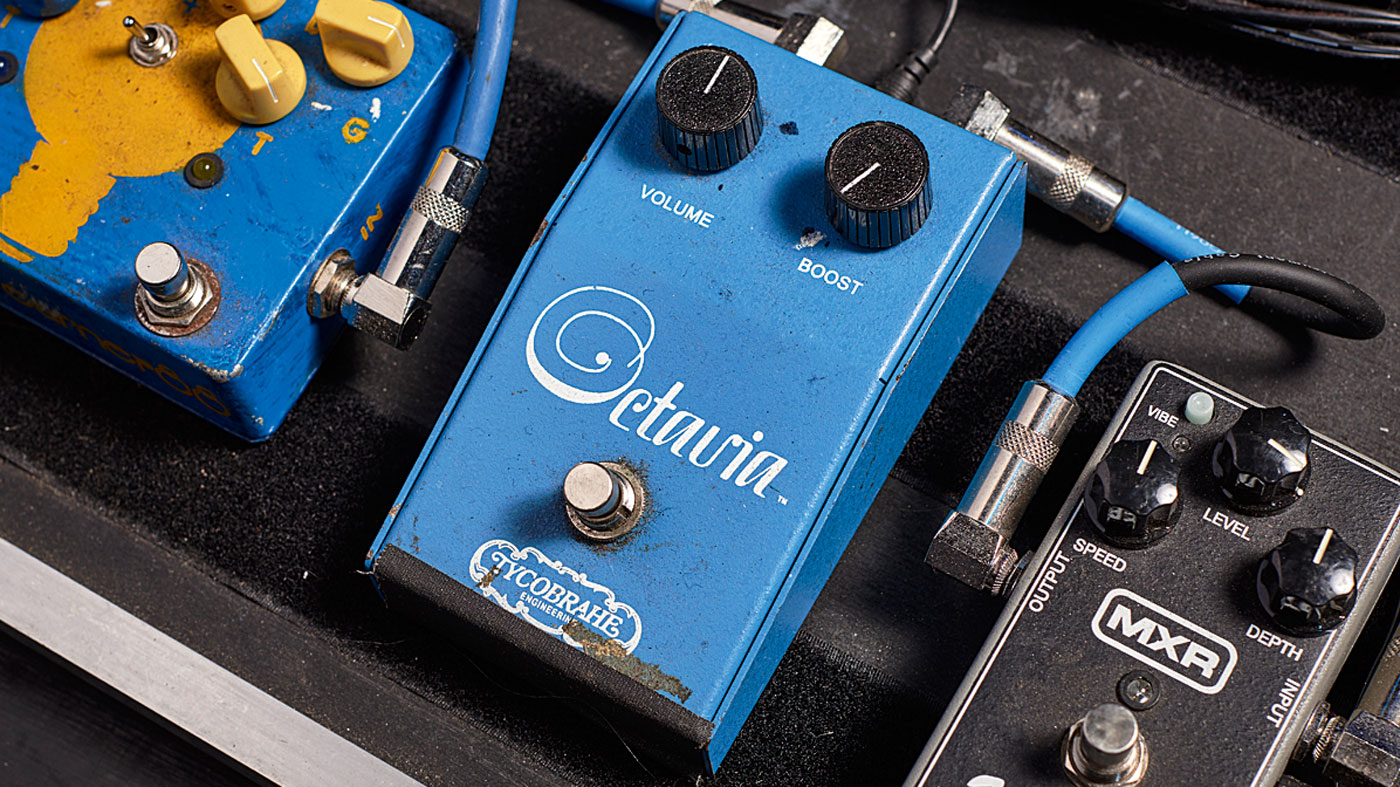
“This is a reissue from Chicago Iron. Again, I have the original and any of the reissue pedals you’ll see on my ‘boards, I always have an original as well. The reissues are pretty dependable and it’s a lot less stressful to take out on the road. This one is a pretty faithful reproduction.
“I kind of switch back and forth, right now on my other pedalboard I’m using a Roger Mayer octavia, which is the spaceship version. But this one sounds great. I use it on Blue On Black and in a very small section of Voodoo Child as well. I really use it for the octave eff ect, not so much the fuzz. So I have the boost turned all the way down.”
Jam Pedals Tubedreamer
“I think it’s supposed to be a hot-rodded version of a Tube Screamer. It has a housing with two independent circuits. One has more drive and actually a little more treble to it, which I really have to dial back. On the left channel I have the tone knob turned way back, and on the right channel I have it turned way up.
“I haven’t opened this pedal up but sometimes these kind of pedals have chips in them that can go bad. And one of the things that starts to happen is they can get really bright, or their level will get drastically off . But right now this is working the way that it is.
The one thing about the Tube Screamer circuit compared to the King Of Tone is it has a little more midrange
“Primarily, I’m only using the right channel because it’s the lower gain side. The one thing about the Tube Screamer circuit compared to the King Of Tone is it has a little more midrange. The King Of Tone has a bit more clarity and depth. So if you want you can combine the two and get a really full spectrum sound.
“So it depends on the solo or the particular song with what I’m going for: whether I just use the King Of Tone, or whether I use a combination between the two to get a little more mid boost to get the solo a little further out there.”
Analogman King Of Tone
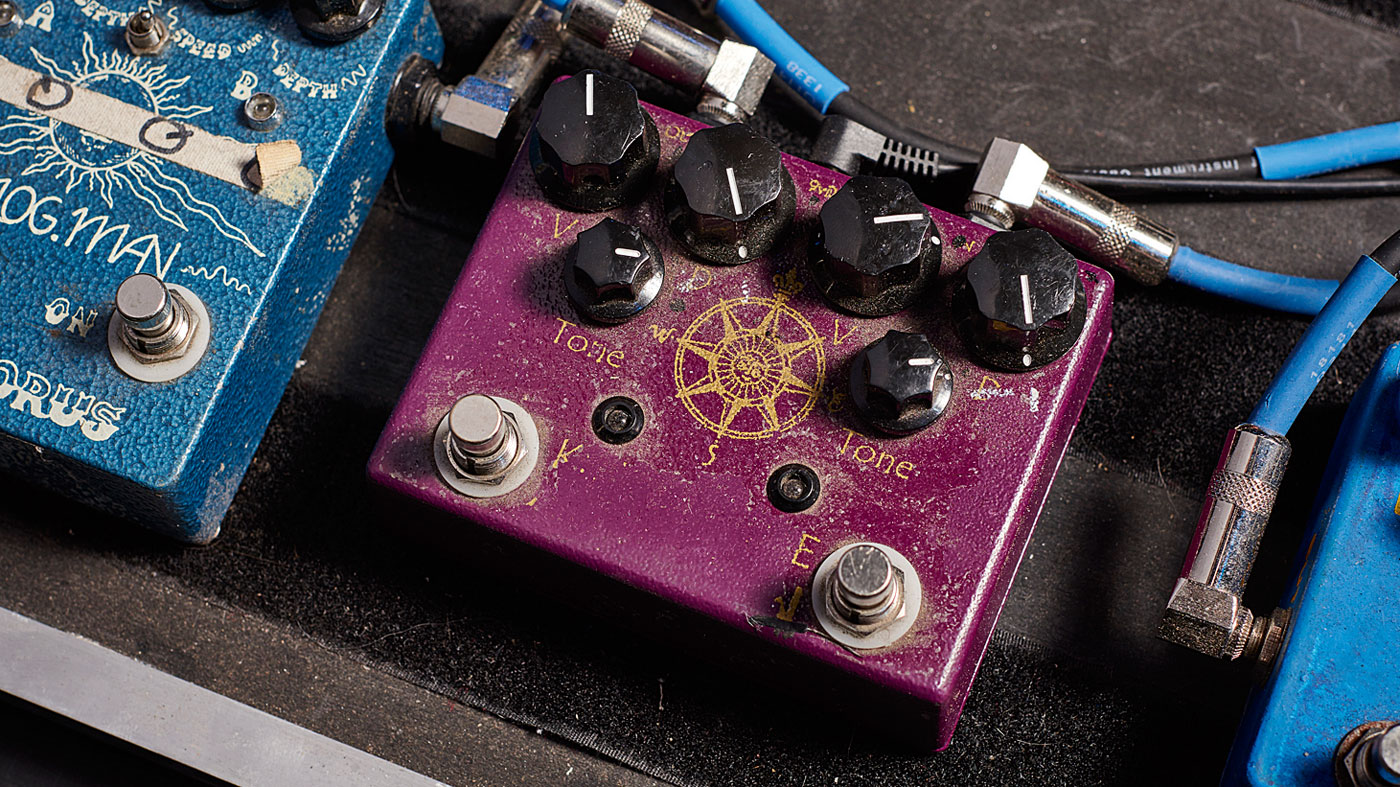
“Ever since this pedal came out, it’s been on every pedalboard I’ve had. It’s probably one of the most outstanding overdrive pedals ever, certainly in recent history. It’s got a really three-dimensional sound to it, and it’s got a lot of clarity so it doesn’t muddy your tone.
“A lot of guys throw around the term ‘transparent’ when they’re talking about overdrives, but I think this one really does have a lot of transparency. It doesn’t colour your tone too much; it allows it to go to that next level. It adds some overtones that you’d hope the amp can accomplish. Sometimes when the amp can’t do it the pedal can help you get there.
“The right side for me is the high gain channel, and the left side is the lower gain channel. A lot of times I’ll use the right side for fills and when I want to play a solo, I’ll kick the left side on top of the right side just to send it right over the edge. But that’s dependent on the amps I’m using.”
Analogman Bi-Chorus
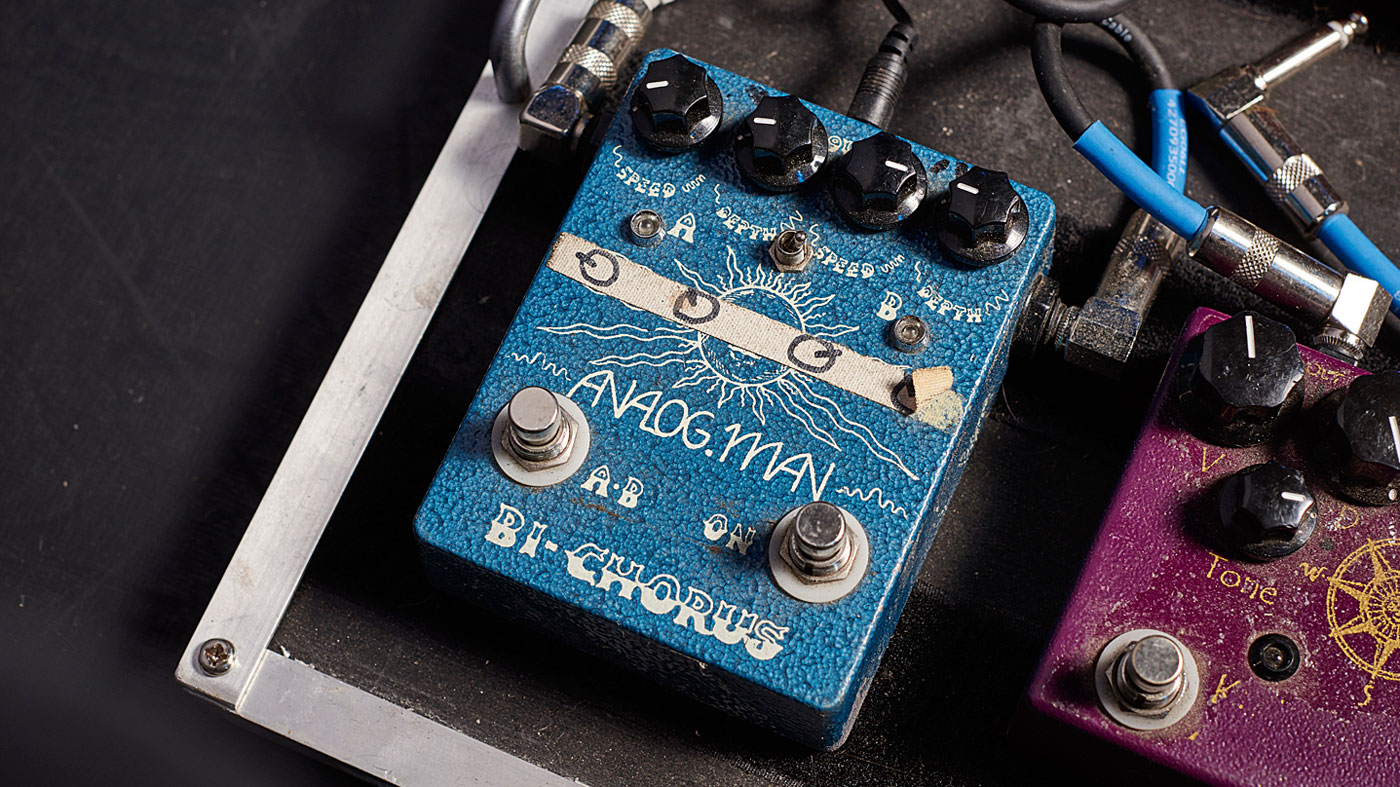
“This is a chorus pedal with two different independent settings. I kind of use it like a Leslie in a box. So there’s a slow setting and then you switch it over and it’s a fast setting. It’s a pretty great pedal if you like a chorus and don’t necessarily have enough room for a Rotovibe. I use it on Down For Love; it’s an old fashioned Texas shuffle. It really gets that sound, in my opinion, in a little bitty box.”
Jam Pedals Delay Llama
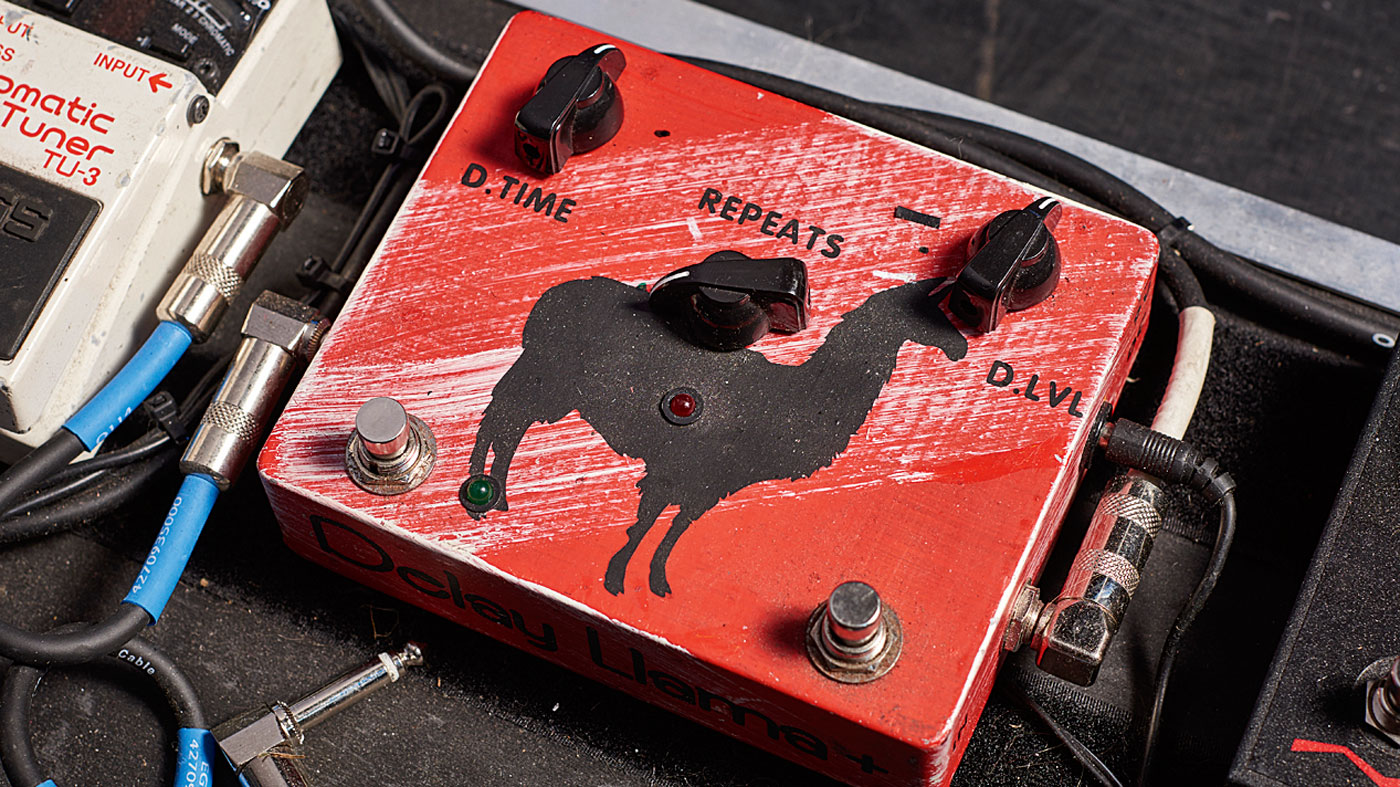
For the longest time I would run three Twins and crank them up but it’s really not good for the ears!
“They sent me one of the very first ones. It’s an analogue delay pedal and I prefer analogue where possible. It was a pretty good-sounding pedal from the get-go, but I actually developed a version of this pedal with them that has tap tempo, which I believe was the very first analogue delay with tap tempo. That’s on my other pedalboard, this is one of my earlier versions. It has a button that’s a hold switch, if you want to stack the delay indefinitely until you turn it back off .
“Some guys leave delay on all the time, but none of my heroes ever did that. I don’t come from that school personally. And it’s easy to do as it can help cover up your mistakes. So it can make playing a guitar a lot easier because you don’t have to be as accurate. But I don’t do that, I use it purely as an effect. It probably gets turned on maybe four times in a two-hour long show.
“In the States I’ve got four to five amps onstage. And in that setup we have the ability to switch amplifiers, but over here I’m just running two amps and the third one is a backup in case something blows up. I’m running both of these at the same time, they’re set up to pretty much run in stereo. For the longest time I would run three Twins and crank them up but it’s really not good for the ears!”
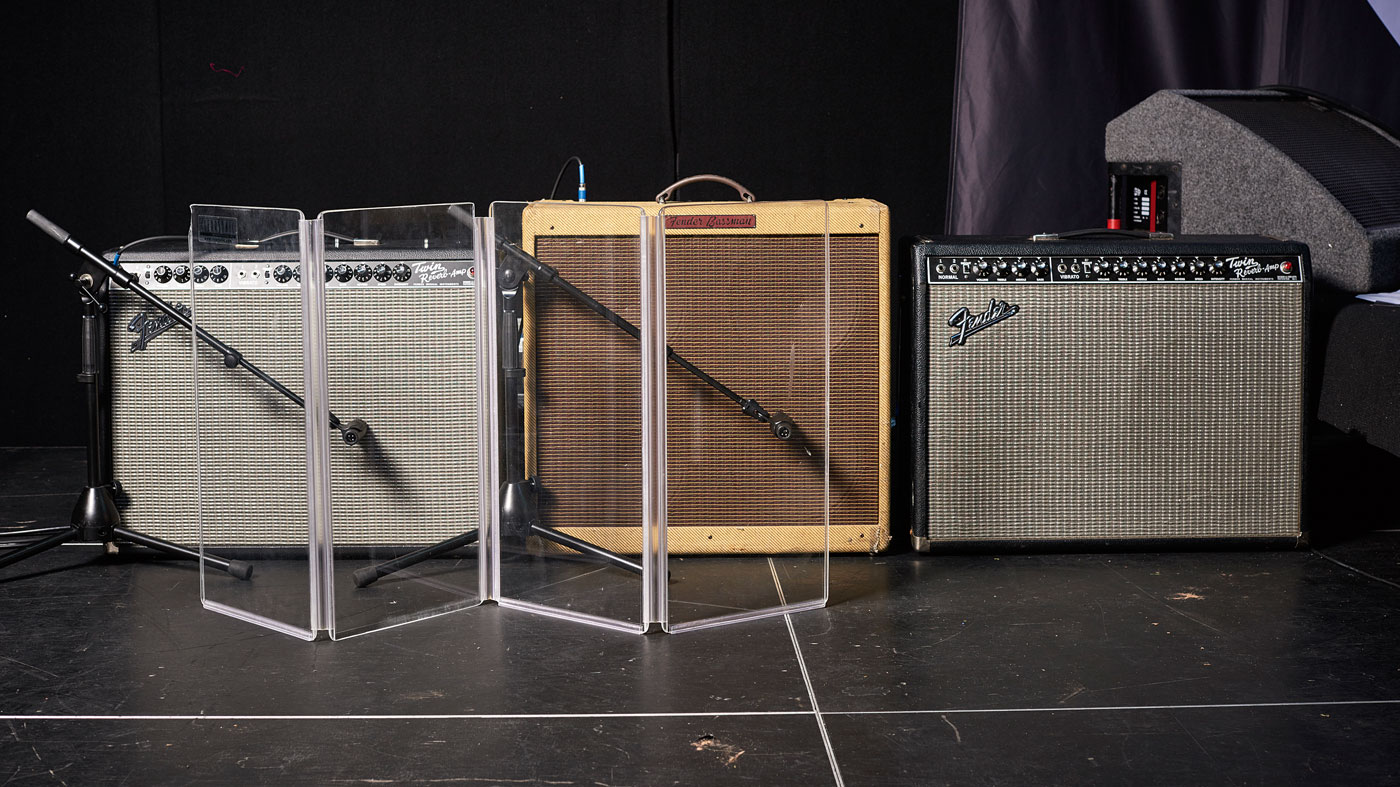
Amps
Blackface Fender Twin Reissue
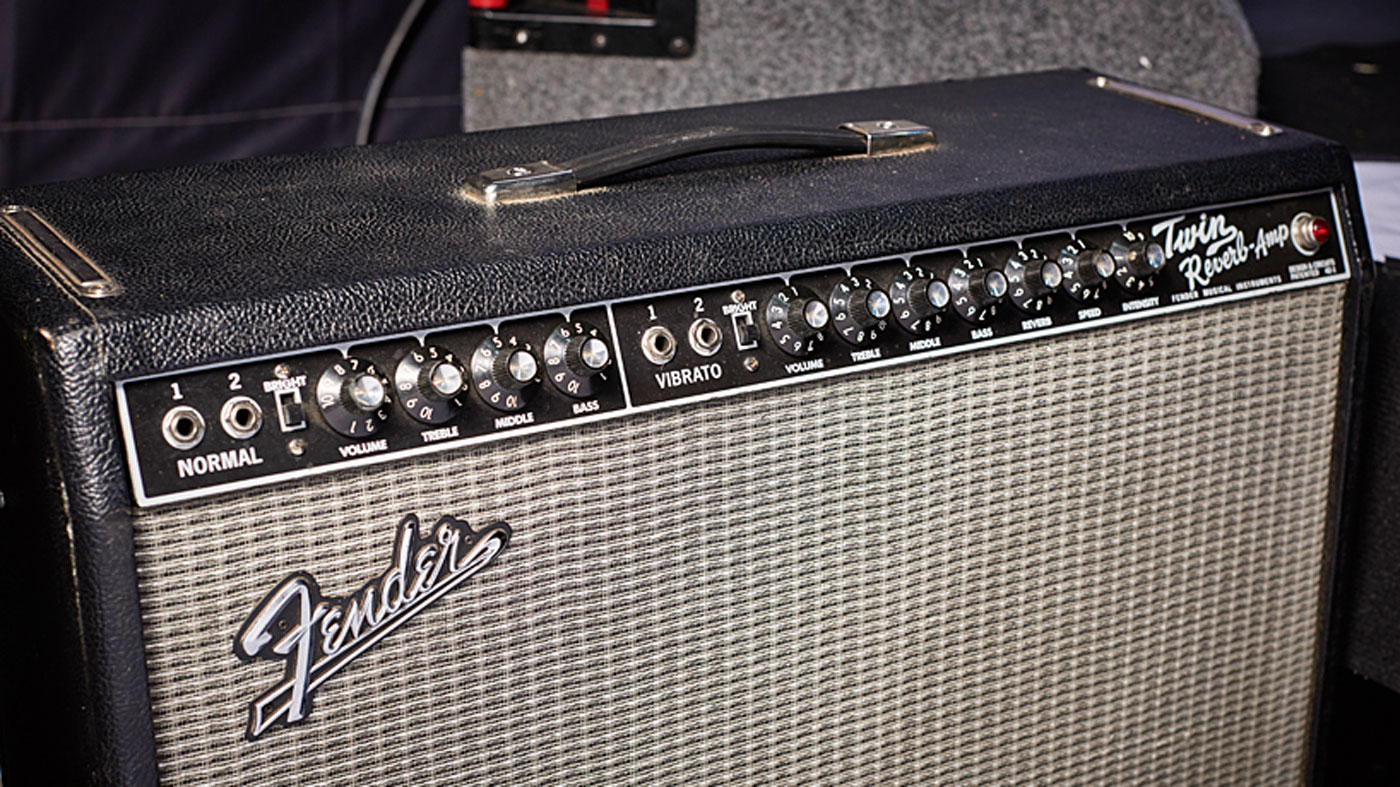
“I don’t know what the deal is but the Twins never sound as loud over here as the ones that I have back home. But these rentals have been sounding pretty decent, and I was happy last night with the sound.
We usually start with everything at five or six and then finetune it at soundcheck
“The settings vary venue to venue. This room is probably going to be pretty loud and bright because you have a lot of metal surfaces and there’s not a lot of sound insulation. Last night I was running this on eight and a half, tonight it will probably stay around five because of the room. Last night it needed to be a bit brighter to compensate for the sound of the room. We usually start with everything at five or six and then finetune it at soundcheck. When I’m using a Tweed with a Blackface amp, I use the normal channel rather than the vibrato channel, otherwise they end up being out of phase with each other.”
Fender Bassman
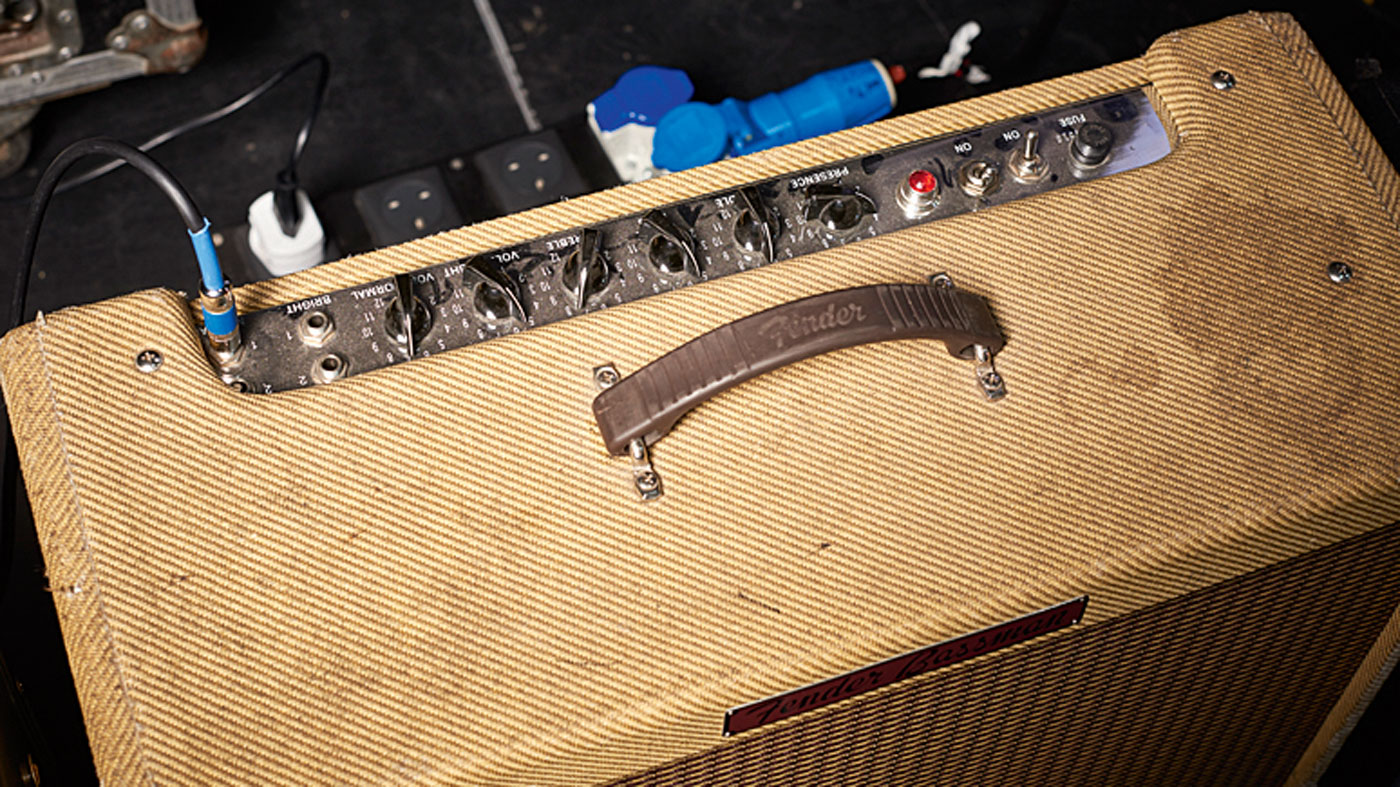
“I use the Bassman because the Twins are usually very clean, with Twins you can’t usually get them to break up until you get to between seven and 10 on the volume.
The Bassman really helps me to get a little more crunch at a lower volume
“So the Bassman really helps me to get a little more crunch at a lower volume. And we pan the amps out front of house. So they’re probably panned with one at 10 0’clock and one at 2 0’clock, so you get a spread and it’s a nice sound because you get a blend of a cleaner tone sound with a slightly dirtier sound. It really works out because it gives a full sound and, sonically, I’m able to accomplish more with the two diff erent circuits than I would if I was just using one or the other.
“What I really like is them to be just on the verge of breaking up, then the pedals send it just over the edge. Right now this is on the normal channel with the volume on seven, the treble on seven and the bass on fi ve, middle on six and a half, and the presence on four. That’s a pretty basic point to start for me.”
Kenny Wayne Shepherd’s latest album Lay It On Down is out now on Provogue.

Rob is the Reviews Editor for GuitarWorld.com and MusicRadar guitars, so spends most of his waking hours (and beyond) thinking about and trying the latest gear while making sure our reviews team is giving you thorough and honest tests of it. He's worked for guitar mags and sites as a writer and editor for nearly 20 years but still winces at the thought of restringing anything with a Floyd Rose.

